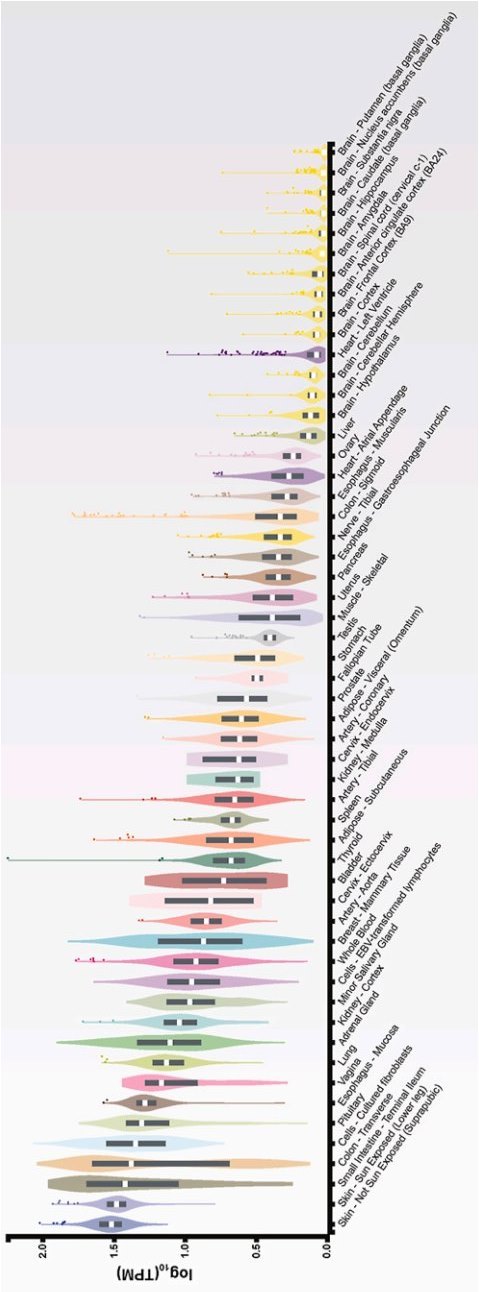The Vitamin D receptor has been found in 54 human tissues
Vitamin D: A master example of nutrigenomics
Redox Biol . 2023 Jun;62:102695. doi: 10.1016/j.redox.2023.102695
Carsten Carlberg 1, Marianna Raczyk 2, Natalia Zawrotna 2

Nutrigenomics attempts to characterize and integrate the relation between dietary molecules and gene expression on a genome-wide level. One of the biologically active nutritional compounds is vitamin D3, which activates via its metabolite 1α,25-dihydroxyvitamin D3 (1,25(OH)2D3) the nuclear receptor VDR (vitamin D receptor). Vitamin D3 can be synthesized endogenously in our skin, but since we spend long times indoors and often live at higher latitudes where for many winter months UV-B radiation is too low, it became a true vitamin. The ligand-inducible transcription factor VDR is expressed in the majority of human tissues and cell types, where it modulates the epigenome at thousands of genomic sites. In a tissue-specific fashion this results in the up- and downregulation of primary vitamin D target genes, some of which are involved in attenuating oxidative stress. Vitamin D affects a wide range of physiological functions including the control of metabolism, bone formation and immunity. In this review, we will discuss how the epigenome- and transcriptome-wide effects of 1,25(OH)2D3 and its receptor VDR serve as a master example in nutrigenomics. In this context, we will outline the basis of a mechanistic understanding for personalized nutrition with vitamin D3.
📄 Download the PDF from VitaminDWiki
VitaminDWiki - Vitamin D Receptor activation can be increased in 14 ways
Omega-3, Magnesium, Zinc, Quercetin, non-daily Vit D, Curcumin, intense exercise, Butyrate Ginger, Essential oils, etc Note: The founder of VitaminDWiki uses 10 of the 14 known VDR activators
VitaminDWiki – The Vitamin D Receptor is associated with many health problems __
{include}
VitaminDWiki – Vitamin D Receptor category:
{include}
81+ Vitamin D Receptor and Cancer studies
{include}
